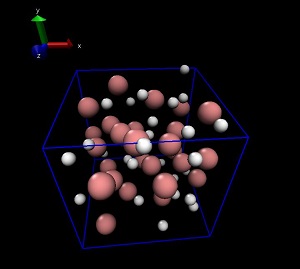Fe-H
 The inner structures of planets reflect the way in which they formed and evolved. Space programs such as NASA’s Juno, offer information that will help us better constrain our models of planetary interiors. Unfortunately, the invaluable information provided by this mission is not sufficient to paint a full picture of Jupiter’s interior. Jupiter is not only much larger than Earth but it is also very different. The differences in pressure-temperature conditions coupled with very different bulk chemistry make Jupiter and the extra-solar giant gaseous planets truly alien.
The inner structures of planets reflect the way in which they formed and evolved. Space programs such as NASA’s Juno, offer information that will help us better constrain our models of planetary interiors. Unfortunately, the invaluable information provided by this mission is not sufficient to paint a full picture of Jupiter’s interior. Jupiter is not only much larger than Earth but it is also very different. The differences in pressure-temperature conditions coupled with very different bulk chemistry make Jupiter and the extra-solar giant gaseous planets truly alien.
Thermodynamic data can help model the interior structures of giant planets (Jupiter, Neptune, Uranus, and the extra-solar planets). Due to the extreme pressure and temperatures found inside such planets, tens of times greater than the conditions of the Earth’s inner core, experimental measurements are very difficult.
The gaseous planets of our solar system are rich in hydrogen and helium. Extrasolar planets such as 51 Pegasi b and Kepler 7-b might have similar chemical composition. Cosmochemical constraints require them to also contain some heavy elements such as Fe and Si, perhaps concentrated in their cores. The current view is that solar giant planets have Fe-rich cores surrounded by H-rich fluid.
Unlike Earth, where the inner core is growing as the planet cools, in the case of the giant outer planets of our solar system it has been hypothesized that their cores might have shrunk over time, through the dissolution of Fe in liquid H. This is a fascinating possibility and it can only be tested if the physical properties of the Fe-H system are understood.
Closer to home, in the Earth’s core, hydrogen is thought to exist in the liquid outer core and as a possible impurity in the inner core. The composition of the core in terms of light elements is the subject of on going research. The Fe-H system, liquid and solid, have not yet been fully investigated, therefore the role of hydrogen in Earth’s core is not completely understood.
We will investigate the Fe-H system (two phases of this system are shown in fig. 1 & 2) at extreme pressures and temperatures through the use First Principles Molecular Dynamics and Classical Molecular Dynamics. We will use our molecular dynamics results to compute not only the equation of state the fluids in the Fe-H system but also the miscibility, the structure of such fluids, the diffusivities and all in all a wide range of properties.

